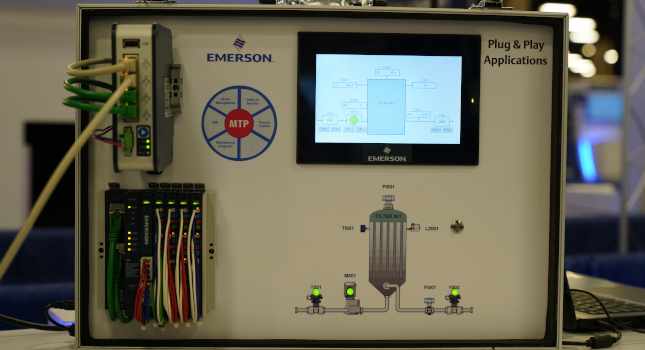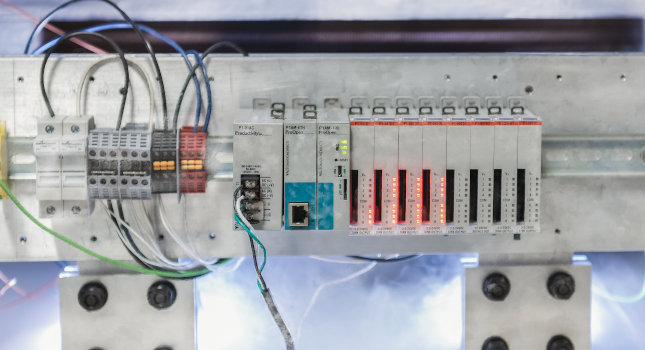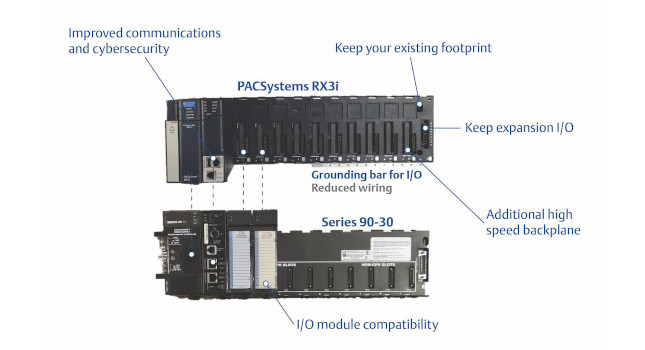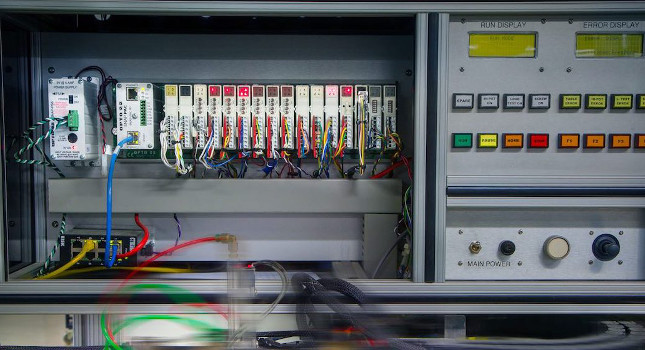By now, every electrical engineer has heard something about harmonics. Harmonics are generated by nonlinear loads such as traditional variable-speed drives, uninterruptible power supply (UPS) systems and any other power conversion device that changes ac into dc with some form of rectifier bridge. Any device that draws a pulse of current from the electrical network for less than the entire volta...
By now, every electrical engineer has heard something about harmonics. Harmonics are generated by nonlinear loads such as traditional variable-speed drives, uninterruptible power supply (UPS) systems and any other power conversion device that changes ac into dc with some form of rectifier bridge. Any device that draws a pulse of current from the electrical network for less than the entire voltage wave generates harmonics (Fig. 1). Harmonics are simply a mathematical representation of these distorted waveforms that allow us to model electrical network response at multiple frequencies, and better understand and predict how the electrical network will react to this high-frequency content — or ‘electrical pollution.’
Harmonics: Bad
We care about harmonics for several reasons. First, harmonic current generates heat in all the current carrying components of the electrical distribution system: switchgear, breakers, fuses, cabling, capacitors, busduct, busbar and transformers. Harmonic current generates more heat on a per-Amp basis than current at the fundamental frequency (60 Hz). Although the distribution system is often conservatively designed for overcurrents, harmonic heating contribution must be taken into account.
Second, harmonic current flowing through the system impedances generates harmonic voltage distortion. Think of harmonic current as flowing from the utility supply down toward the non-linear loads. As current crosses major system impedances, such as distribution transformers or line reactors or even long-cable or bus-duct runs, it generates voltage drops. The closer you get to the non-linear loads, the more distorted the voltage waveform becomes from a true sinusoid. In severe instances, voltage distortion can cause operational problems with sensitive electronic equipment such as programmable logic controllers (PLCs) and, ironically, variable-speed drives (VSDs).
Voltage distortion — a function of harmonic current and system impedance — is worse on ‘soft’ electrical systems with low available fault levels. So, users at the end of the utility distribution in remote locations or users who operate under generator power are more likely to experience issues relating to excessive voltage distortion.
The other issue with voltage distortion is that it causes harmonics to propagate throughout the network to the linear loads as well. Linear loads are just that — linear. If you apply a triangular voltage wave to a linear load, such as a full-voltage across-the-line motor, it will try to draw a triangular current waveform. Consequently, as voltage distortion increases, linear loads begin to draw harmonic current.
In the case of motors, some of these harmonic voltages — most notably the 5th and 11th harmonic — generate back EMF in the motor and therefore decrease the motor efficiency. The extra heating in the motor caused by the harmonic current flow may also cause additional wear and tear and shorten motor life.
Third, harmonics present on the electrical system make correction methods for poor power factor more complex and expensive. Traditionally, capacitors are installed to improve power factor, thus increasing system efficiency and usually resulting in some form of savings on the monthly electrical bill. While capacitors do not generate harmonics, they can interact and magnify harmonic levels through a condition called resonance, increasing both harmonic current and voltage distortion levels.
Power Factor Corrections
While harmonics are thought of as a steady-state phenomenon, harmonic levels on the electrical network are really dynamic in nature, changing rapidly as various loads are cycled on and off, and varied in magnitude such as with VSDs. Power factor correction systems must be designed to avoid resonance and also to cope with the varying reactive power requirements and varying harmonic levels on the network.
Also, a power factor correction system must be designed not only for the harmonic levels present on the network today, but also for possible future increases with load additions. Failure to consider harmonics in the design phase of a power factor correction project will inevitably result in a premature failure. Remember, harmonic current generates heat in the current carrying components of the network, and capacitor systems tend to absorb harmonics and thus bear the brunt of this effect.
Finally, the IEEE 519-1992 standard requires that end users limit harmonic levels to ensure network stability for all users. It outlines acceptable levels of harmonic distortion (both voltage and current) and the Point of Common Coupling (PCC) with the utility.
The truth is that customer X rarely affects customer Y on the grid, but rather, that usually customer X causes problems for himself within the four walls of his building. A more practical approach is to apply the harmonic limits spelled out in IEEE 519, but within the customer’s electrical network (usually at the low voltage level). This will ensure that harmonic problems will not occur.
People in industry have said that, “Harmonics are not a problem until they are a problem.” However, we tend to put off dealing with little problems until they become big problems. In this way, harmonics are similar to most other types of pollution. The trick is to realize there is a problem before it’s too late. As with most other types of pollution, an ounce of prevention is often worth a pound of cure.
Mitigation Techniques
Now that we recognize the problems harmonics can cause, how do we minimize them? Mitigation methods for harmonics fall into two groups: device level and systems level. Device-level solutions include:
Inductors and isolation transformers
5th harmonic filters
Broadband filters
Multi-pulse drives
Active front end (AFE) converters.
System-level harmonic mitigation approaches include:
Passive filters
Active harmonic filters.
The simplest technique for reducing harmonics is adding impedance in front of the major nonlinear loads. This technique is inexpensive and relatively simple to implement. Adding a 3% (or greater) inductance in front of a VSD can yield a current-smoothing effect, reducing total harmonic current distortion from 90% to around 35%. In addition, this technique provides a small measure of transient suppression to the load and is also complementary to active harmonic filtering.
The two disadvantages of the technique are that the actual harmonic reduction depends somewhat on source impedance, and that only the first incremental impedance has a significant impact. In other words, adding a second 3% inductance does not make things substantially better than the first inductance.
The second device-level technique is the addition of a tuned filter at the device input terminals (Fig. 2). The inductor (Lp) and the capacitor (C) provide a low impedance path at one tuned frequency (typically 5th) while the second inductor (Ls) acts like the inductor mentioned above, which reduces harmonics from the load via the current-smoothing effect, while also decoupling the filter branch from the rest of the electrical network — so that there is little risk of the tuned filter drawing harmonics from other sources on the network and becoming overloaded.
The drawback of the device-applied passive filter is, unless it is somehow switched, it injects a fixed amount of reactive power (VARs) into the network at all times — even if the load is not operating. This technique works reasonably well for dc VSDs because they have high reactive power requirements. However, for ac VSDs or UPSs that have little or no need for reactive power compensation, this technique is less practical because it can cause leading power factor.
A broadband filter is another device-level solution that uses inductors and capacitors (Fig. 3). A broadband filter employs three separate inductors and one capacitor carefully selected to be reasonably effective at reducing harmonics up to the 13th order.
The disadvantages of the broadband filter are that it can be safely employed only with diode front-end conversion devices, it is physically large and the losses of the device exceed 5%. As series connected devices, both broadband and tuned filters have the possibility of interrupting power to the load in the event of a component failure within the filter. For critical loads, this may be a significant drawback.
Multipulse drives employ a phase-shifting scheme with multiple power converters to take advantage of harmonic cancellation that occurs through a phase shift (Fig. 4). Current distortion levels from 12 and 18-pulse configurations are substantially improved versus 6-pulse. However, this comes at a cost. The physical size of the drive is much larger and initial purchase price is at a premium. In addition, there are substantial losses associated with the magnetic phase shift that contribute to higher operating costs of multipulse drives.
These heat losses must also be taken into account when calculating the cooling requirements of the room in which the devices are installed.
Active front end (AFE) converters are a relatively recent development and are being employed in both VSDs and UPSs. In an AFE device, an insulated gate bipolar transistor (IGBT) converter is used, which can reduce harmonic output of the device and maintain near unity power factor. Furthermore, the IGBT can allow 4-quadrant operation of a VSD, allowing regenerative braking, which is useful in many process applications and provides even greater energy efficiency. In order to ensure voltage distortion is not excessive, a mains filter is employed as part of the topology.
There are some severe restrictions on the types of loads permitted on the same bus as the AFE device, which make it impractical to use in many instances. Other IGBT-based or silicon-controlled rectifier-based converters, capacitors and switch-mode power supplies are prohibited. The AFE VSD is also very large and expensive compared to traditional drive topologies and the input inductors on the AFE increase operating losses substantially versus conventional VSDs.
A passive harmonic filter may contain a series/shunt capacitor/inductor network and a series inductor or transformer. This type of filter often is added to an electrical system as a peripheral to a drive system. However, it must be tuned to the individual drive. Multiple drives require multiple filters.
Active harmonic filters are sometimes called active power line conditioners. Rather than block or shunt harmonic currents, active filters attempt to condition them. Active harmonic filters monitor and sense harmonic currents electronically and generate corresponding waveforms to counter the original harmonic currents. The generated waveform is injected back into the electrical supply to cancel the harmonic current generated by the load.
Author Information
Rudy T. Wodrich is the director of the Power Quality Group of Schneider Electric/Square D in Toronto, Ontario. He has worked in the power quality field for more than 15 years. His team has the responsibility to solve power quality problems relating to flicker, harmonics, voltage sag and power factor.



